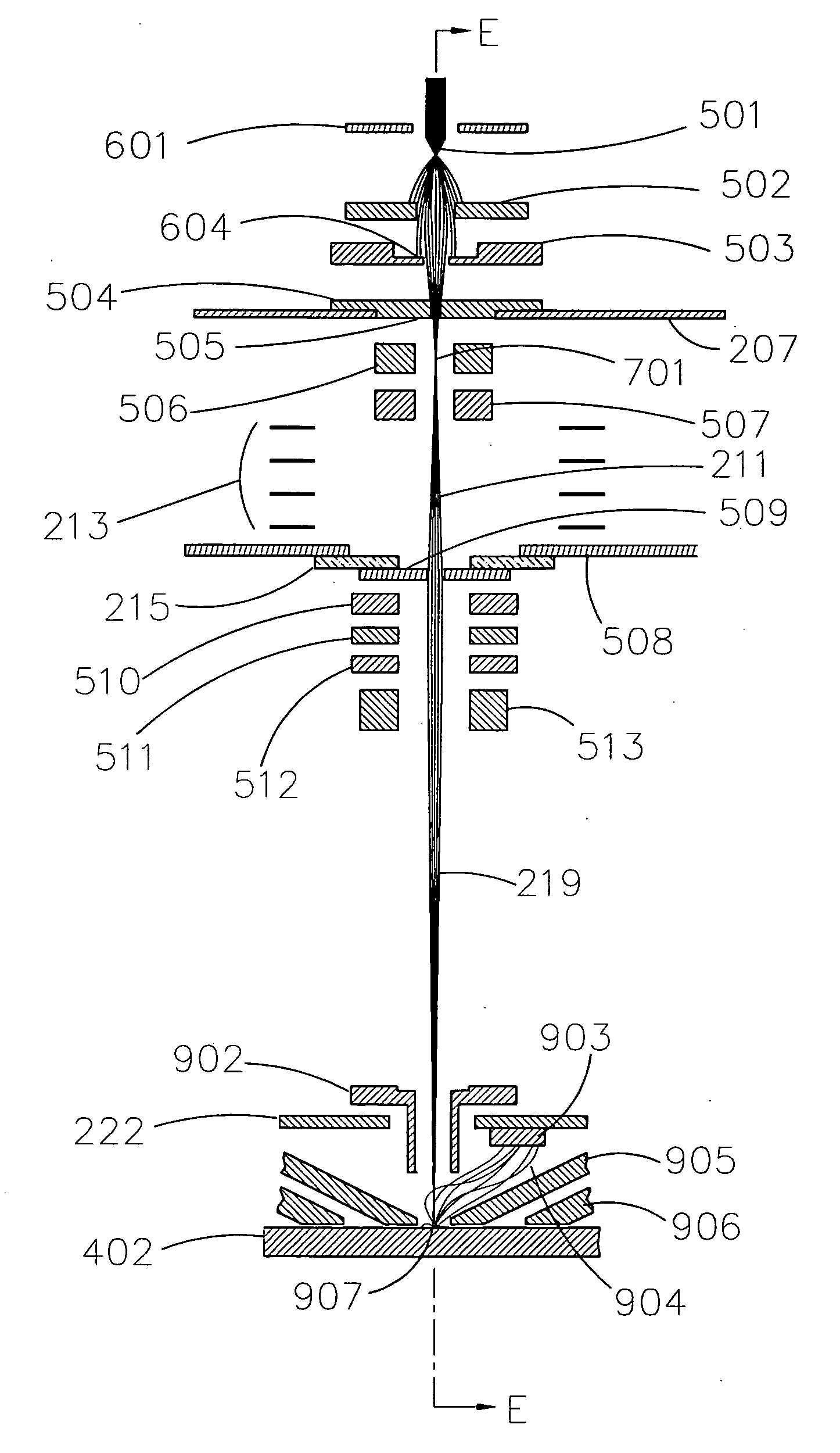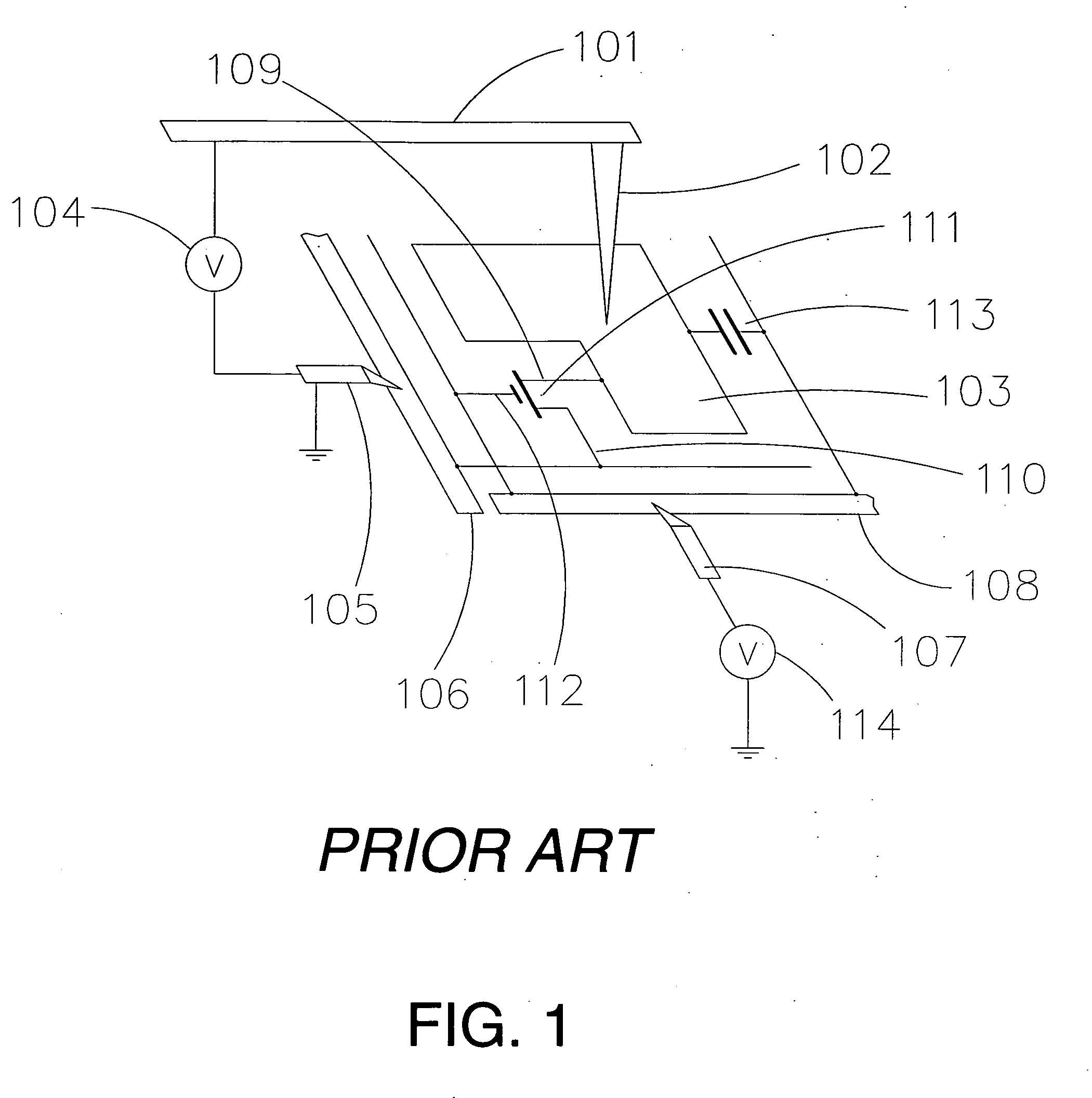Apparatus and method for inspection and testing of flat panel display substrates
a flat panel display substrate and display technology, applied in the field of electroctron optics, can solve the problems of needing to fabricate a new modulator, all three flat panel display substrate testing systems and methods described above suffer from throughput limitations that will only get worse, and achieve high voltage contrast, enhanced throughput, and easy scalable to any width substrate
- Summary
- Abstract
- Description
- Claims
- Application Information
AI Technical Summary
Benefits of technology
Problems solved by technology
Method used
Image
Examples
first embodiment
[0105]FIG. 6 shows a schematic cross-section of an electron optical column assembly in a plane containing the optical axis and the main scan axis, illustrating the 125 mm scan field (along the direction of the main scan axis) and the stitching together of scan fields from two neighboring columns. The upper optics assembly 401 is shown generating two beams, 404 and 405—in actual operation, only one of these beams would be present at any one time. Both beams 404 and 405 are shown here together to illustrate the wide scan field obtained with the present invention. The width of the scan field is determined by: (1) the width of the substrate to be inspected, and (2) the desired number of beams to be produced by the column assembly, which is determined by the tradeoff between increased cost (more beams) and lowered throughput (fewer beams). Clearly, the required scan field is then determined by:
[0106] Required Scan Width=[substrate width] / [number of columns]
A generation 7 flat panel disp...
second embodiment
[0178]FIG. 26 shows a schematic cross-section of an electron optical column assembly in a plane containing the optical axis of one column and perpendicular to the main scan axis. Electrons are emitted by the source tip 2701 under the influence of a high electric field generated by the voltage difference between the tip 2701 and the extraction electrode 2702, typically 2700-3400 V. The suppressor electrode 2601 is typically biased negative relative to the tip 2701 to suppress electron emission from the shank (upper cylindrical portion) of the tip 2701, since this emission cannot be used to form the electron beam. The source lens comprises the extraction electrode 2702, the source lens electrode 2703, the beam-limiting aperture 2724, and the source plate 2704. Depending on the voltage applied to the source lens electrode 2703, the source lens will transmit rays through the BDA 2705 with initial half-angles at the source tip 2701 over ranges varying from 0.0°-0.8° to 0.0°-2.0°.
[0179] E...
PUM
 Login to View More
Login to View More Abstract
Description
Claims
Application Information
 Login to View More
Login to View More - R&D
- Intellectual Property
- Life Sciences
- Materials
- Tech Scout
- Unparalleled Data Quality
- Higher Quality Content
- 60% Fewer Hallucinations
Browse by: Latest US Patents, China's latest patents, Technical Efficacy Thesaurus, Application Domain, Technology Topic, Popular Technical Reports.
© 2025 PatSnap. All rights reserved.Legal|Privacy policy|Modern Slavery Act Transparency Statement|Sitemap|About US| Contact US: help@patsnap.com



